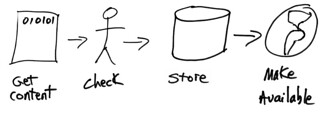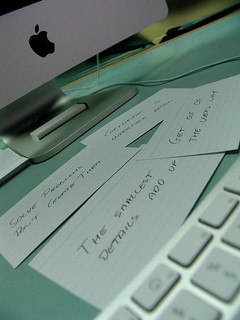 Two and a half days is just not enough time spent with my tribe. I could have gone all week. I’m not ready to go back to the real world.
Two and a half days is just not enough time spent with my tribe. I could have gone all week. I’m not ready to go back to the real world.
This was my third Electronic Resources & Libraries conference, and I’ve been lucky to get to know a few more ER librarians every year. This year was particularly notable, as I was able to spend quite a bit of time talking with peers that I highly respect and look to as inspirations for my own work (Jamene Brooks-Kieffer and Marie Kennedy, just to name two). I did my best to keep it cool and not go fangirl all over them.
Most of the sessions I attended were solid, informative, and often inspiring in their own right. I’m still working through the project list generated last year, and now I have more to add or enhance what’s already there.
I plan to look into:
- JTac software for acquisitions workflow
- CORAL for ER workflow, but maybe not for ERMS, if that’s possible
- MISO software for ingesting SUSHI (since my ERMS is only just starting to look at developing SUSHI ingestion)
- Documenting ER workflows and procedures — I have been intimidated by this, since I’ll be starting from scratch and don’t know where to begin. I realized this week that I could use TERMS as a jumping off point.
- Include a feedback form for each trial we do, rather than just relying on free-form email messages
- Seeing about modifying the workflow for eDDA titles so that liaisons can move them to firm orders before the records are loaded in the catalog
- Also, investigating options for pDDA for slip orders
- Joining a relevant NISO working group, if anything comes up (Marie suggested we do this, and I’ve been interested for a while)
- Being a leader in my library without being higher up in management or at least not beyond where I’m comfortable
There were a few sessions that left me wanting. For one, I keep trying to glean some insight into better ways of managing ER workflows, but our staff is so small and the people who tend to present on the topic come from libraries so large that it’s hard to see where the connections or benefits may be. I am still thinking about how to set up something that would trigger notifications of next steps, even if most of them would end up coming to me. My paper checklist form is okay, but it only works if I remember to do it and to check up on it.
Another session I attended was supposed to be all about a tech services department reorganization with an eye towards eresource trends. However, it seems that the presenter expected more results by now than what he was able to talk about, so most of the session beyond the introduction was about what should be happening rather than what has been happening. I think that it’s difficult to know six months in advance if your new project will be at a place worth sharing, but maybe conferences need to shift more of those kinds of topics to short sessions like the lightening talks, rather than risk the session being a dud because there aren’t enough relevant outcomes to share.
ER&L 2013 will be in Austin again next year, and shortly following the SXSWi conference. They hope to have some connections between the two, so if you’ve been on the fence about attending, that may be the year to take the plunge.






